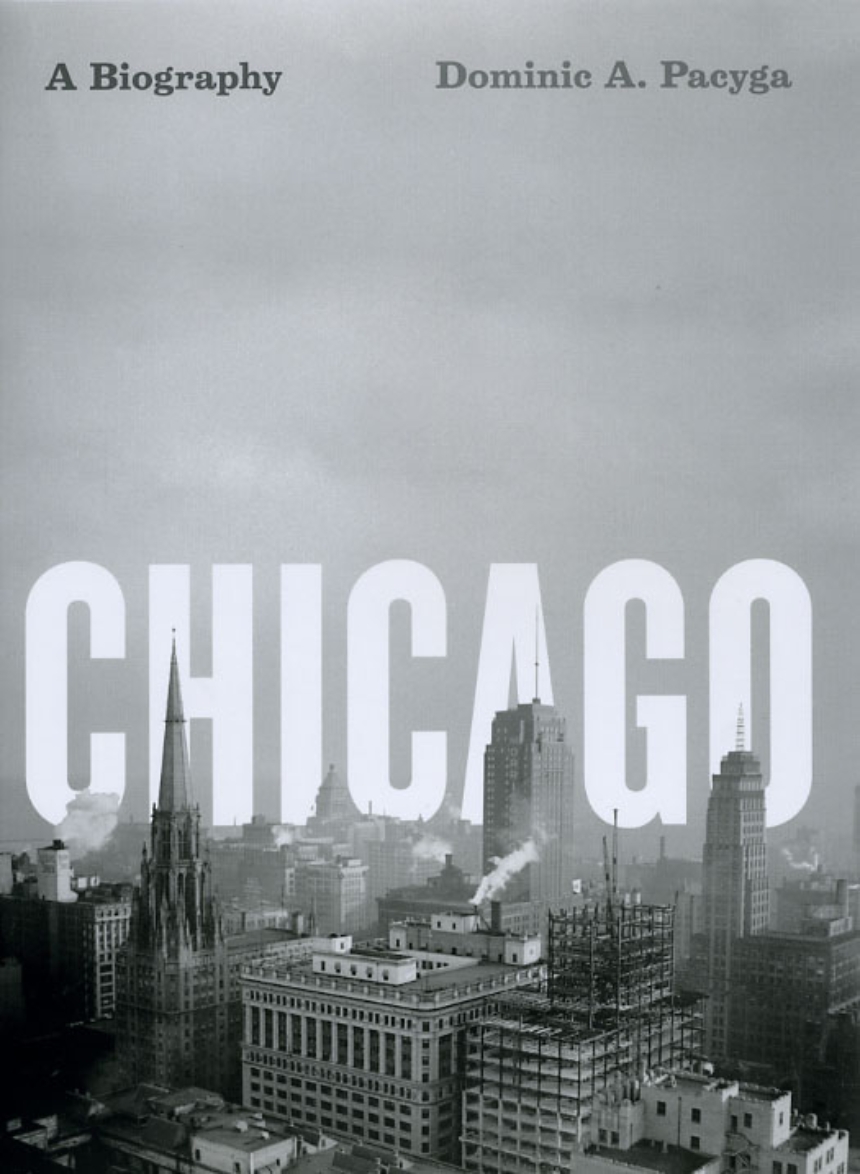Chicago
A Biography
Chicago has been called by many names. Nelson Algren declared it a “City on the Make.” Carl Sandburg dubbed it the “City of Big Shoulders.” Upton Sinclair christened it “The Jungle,” while New Yorkers, naturally, pronounced it “the Second City.”
At last there is a book for all of us, whatever we choose to call Chicago. In this magisterial biography, historian Dominic Pacyga traces the storied past of his hometown, from the explorations of Joliet and Marquette in 1673 to the new wave of urban pioneers today. The city’s great industrialists, reformers, and politicians—and, indeed, the many not-so-great and downright notorious—animate this book, from Al Capone and Jane Addams to Mayor Richard J. Daley and President Barack Obama. But what distinguishes this book from the many others on the subject is its author’s uncommon ability to illuminate the lives of Chicago’s ordinary people. Raised on the city’s South Side and employed for a time in the stockyards, Pacyga gives voice to the city’s steelyard workers and kill floor operators, and maps the neighborhoods distinguished not by Louis Sullivan masterworks, but by bungalows and corner taverns.
Filled with the city’s one-of-a-kind characters and all of its defining moments, Chicago: A Biography is as big and boisterous as its namesake—and as ambitious as the men and women who built it.
472 pages | 145 halftones, 7 maps | 6 x 9 | © 2009
History: American History, Urban History
Sociology: Social History
Reviews
Table of Contents
Introduction: Writing an Urban Biography
1: Location, Location, Location!
The French — Point de Sable and the Coming of the Americans — The Yankees, the Canal, and the Railroads — Ethnic Diversity — Lake Street That Great Street
2: Emporium of the West
Early Industry — Growth Problems — The Threat of War — The Civil War — The Wartime Economy — The Industrial New Age —- The New Relationship between Workers and Owners
3: The Era of Urban Chaos
A Wooden Immigrant City on the Prairie — The Great Chicago Fire — The Clash between Labor and Capital — The Capital of Radicalism — Haymarket — The Loop: A Dark Vision of the Future — The Levee
4: Reacting to Chaos: Pullman, the West Side, and the Loop
The West Side: The Communal Response — The Elite Response: George Pullman — The Middle-Class Reform Response: Jane Addams — The Loop: An Architectural Response — The Columbian Exposition — Paradise Lost: The Pullman Strike
5: The Progressive and Not So Progressive City
The Continued Clash of Social Classes — Chicago’s Progressive Politics — The Progressive Accomplishment — Green Spaces for the Poor and Great Plans — The Problem of Housing the Poor — Big Bill Thompson and the End of Progressivism
6: The Immigrant Capital and World War I
Immigrant City —- World War I — Poison, Hysteria, Politics, and Ethnic Conflict — World War I and the Labor Movement — The Great Migration — 1919: Annus Mirabilis
7: Twentieth-Century Metropolis
The Attack on Immigrants — The Bungalow and the New Ethnic Metropolis — Black Metropolis — Popular Culture — The Automobile — Gangland
8: Years of Crises: Depression and War
Unemployment — Anton Cermak and the Birth of the Democratic Machine — Kelly-Nash: A New Democratic Day — The Urge to Organize: Neighborhoods — The Urge to Organize: Labor — World War II: Emporium of the United Nations
9: Chicago after the War: Changing Times
The Postwar Democrats — The Problem of Race — Englewood: Angeline Jackson’s Neighborhood — Ted Swigon’s Back of the Yards: A Shifting Landscape — Reaction to Change — Arguing over Urban Renewal — Violence: The Murder of Alvin Palmer — Postwar Suburbs — Deindustrialization: The Stockyards
10: Daley’s City
Building the Modern City: Public Housing and Expressways — Daley’s Prime — Black Chicago — 1968: The Whole World Is Watching
11: Apocalypse “Now” or Regeneration?
The Tragedy of Michael Bilandic — Deindustrialization: Phase Two — Seeds of a New Loop — Jane Byrne and the Politics of Angst — 1983: It’s Harold! — The Second Daley — Shifts in the Economy and Immigration — Still the City of Immigrants —- A City Transformed? Race and Class in the Global City
Conclusion: Transforming Chicago and America
Acknowledgments
Notes
Index
Awards
Association of American Publishers: PROSE Book Award
Honorable Mention
Illinois State Historical Society: Russell P. Strange Memorial Book of the Year Award
Won
